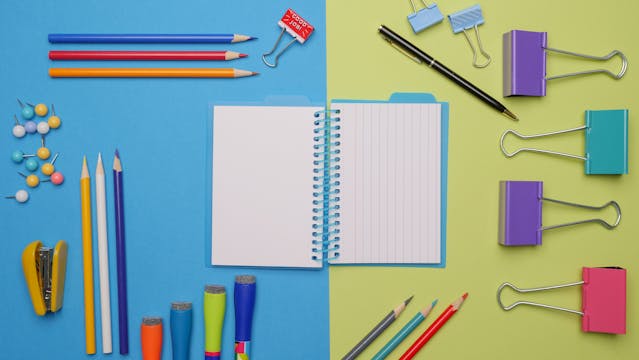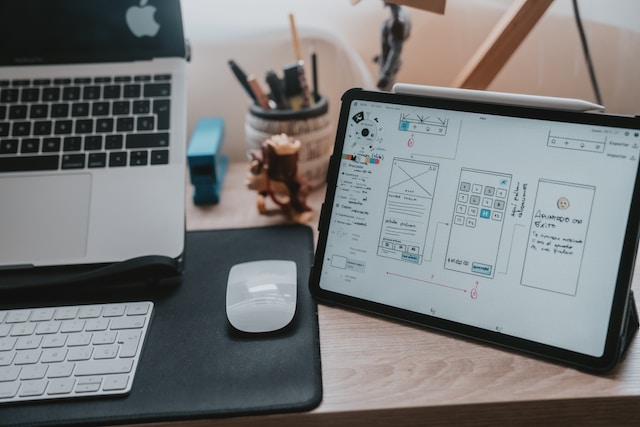It’s no secret that the typical UX design process can prove repetitive and laborious for a lot of UX designers. It’s also no secret that a UX designer’s time is incredibly valuable. That being the case, you can imagine that UX designers want to follow efficient practices where they can.
This is where design sprints enter the picture. Have you ever heard of design sprints? Don’t worry if you haven’t—today is the day you’ll get to know them inside and out.
In today’s guide, we shall address the most common queries pertaining to a UX design sprint. Additionally, we shall provide valuable insights into the sprint process, schedule, activities, and software. By the time you’ve finished reading our guide, you’ll feel ready to implement sprints into your design process!
What Is a Design Sprint?
A design sprint is a process that a design team uses to answer critical business questions and identify challenges. Beyond that, design teams utilize sprints to explore potential design solutions and create realistic prototypes from said solutions.
Created by Jake Knapp, a former design partner of Google Ventures, design sprints effortlessly combine business strategy with design thinking.
What Is a Design Sprint Brief?
If you’ve taken a shine to the concept of a product design sprint, then there’s more that you should know. Specifically, you should know what a sprint brief is, especially since you’ll utilize it a lot!
So, what is a design sprint brief?
A sprint brief is a shared document that you provide to all participants and stakeholders. The goal of sprint briefs is to align your team’s focus and ensure everyone is ready for the sprint.
Your sprint brief should include the following:
- The challenges and goals of the sprint.
- The key deliverables.
- The location, time slot, and a list of attendees.
- A list of approvers.
- A project overview.
- The sprint schedule.

How Long Is a Sprint?
As its name suggests, a design sprint is a fast-paced, efficient approach to the traditional UX design process.
But how long is a sprint, exactly?
A sprint is a five-day process overall. With a sprint, the idea is that you can cram months of work into only five days!
Sprints ensure that you don’t have to wait for feedback until after the launch of your finished products.
‘How?’ you may ask.
Celebrating efficiency, sprints grant you an alternative option. Instead of waiting to receive feedback from real users after the release of your product, you can test your prototypes. By garnering such feedback from prototypes, UX designers can save valuable time, effort, and resources.
What’s more, sprints prevent UX designers from making costly decisions. Enabling UX designers to determine their users’ experience during the prototyping phase means that they can avoid hefty expenditures.
A Typical Design Sprint Schedule
For UX designers, the idea of cramming months of work into five days may seem unfathomable. With five days to work with, you may wonder what facet of UX design you should dedicate each day to.
With that in mind, we’ve provided some much-needed guidance. Below, you’ll find a brief summary of a typical design sprint schedule.
- Monday: You’ll use your first day to map out the problem and choose a crucial area to focus on.
- Tuesday: You’ll create competitive design solutions on paper.
- Wednesday: You’ll turn your ideas into a hypothesis that you will later test and evaluate.
- Thursday: You’ll create a high-fidelity prototype.
- Friday: You’ll test your prototypes on real users and acquire relevant feedback.
It seems easier said than done, right? Worry not; we’ll reveal how you can stick to this schedule shortly!

How To Prepare Yourself and Your Team for a Sprint
Before we dive into the design sprint process, you must know that there is a lot of preparation beforehand.
Sprints completely re-work the way your team collaborates, so you must have an abundance of discussions and prepared research. Let’s take a look at how you go about preparing yourself and your team for a sprint!
1. Pitching Your Design Sprint Idea to Your Team
As we mentioned earlier, sprints drastically change your team’s collaborative work ethic and processes. In order for your sprint to prove successful, you’ll need support from your team before the sprint begins.
When you pitch your sprint to your team, you should focus on how it will cater to their unique needs. You must show your team why a design sprint would benefit the unique contexts of this specific design project. In doing so, you’ll establish a transparent rapport with your team and improve their engagement with the sprint.
In the nature of team engagement, you should ask open-ended questions pertaining to the root causes of the user’s problems. By encouraging active participation from your team, they’ll realize on their own terms why a sprint is necessary.
2. Discussing Vital Facets of Your Sprint
There are a few elements within the sprint process that you absolutely must clarify before you start.
You should discuss the following topics with your team:
- User Research: Ask yourself how much you know about your users and if it’s enough to conduct a sprint. From this question, you and your team should collect and assess the user research data you already have. Consequently, you’ll find any gaps in your knowledge regarding your users or the problem area. You can then fill in those gaps with more research prior to the sprint.
- The Team’s Dynamic: You must have a conversation with the business owner or product manager. This conversation will regard the assembly of the team. You should aim to assemble a diverse group of no more than seven people who can offer different perspectives. By doing so, you’ll get a better idea of the challenge and how to potentially resolve it.
- The Challenge: You must ensure that everyone knows what the challenge is. You must ensure that everyone has a general notion of what they will attempt to achieve. Although clarifying the primary challenge falls into the sprint process, it’s good to have an idea in mind beforehand.
- The Long-Term Goal: Again, like the challenge, you will decide on your long-term goal during the sprint process. However, it’s useful to know which direction your company intends to head toward.

3. Assigning Crucial Roles
A sprint team consists of several cross-industry experts. Regardless of the size of your team, you must ensure you have the following:
- A decider/product manager
- A facilitator
- A customer expert
- A design expert
- An engineer/tech logistics expert
- A marketing expert
4. Setting Up Your Workspace
A sprint is an intense, fast-paced working environment. That being the case, it’s imperative that your workspace is quiet and fosters a productive work culture.
You should also consider purchasing the following materials to ensure your collaborative efforts go unobstructed.
- Post-it notes
- Sharpies
- Whiteboards
- Masking tape
- Scissors
- Glue sticks
- Paper of various sizes

The Design Sprint Process
We mentioned earlier that we would explain how you can stick to a typical sprint schedule. What better way is there to provide that explanation than to reveal the design sprint process?
We’ll guide you through each step of the design sprint process so that you can utilize your time effectively!
1. Monday’s Routine
You should dedicate the first day of your sprint to sharing your knowledge of your users and the challenge. You should also choose an area of focus for the week’s effort on the first day.
You’ll discuss everything that we mentioned in the previous section, creating a blueprint for the week. You’ll all agree to a long-term goal, map out the challenge, and garner insight from the experts you recruited.
The last thing you’ll do is pick a piece of the problem that you can realistically resolve in five days.
2. Tuesday’s Routine
On Tuesday, you’ll focus on design solutions. You’ll start by providing your team with some design inspiration. Then, you’ll ask them to remix and enhance those existing designs to spark moments of creativity and innovation.
After that, every team member will follow a four-step sketch process that exercises their critical thinking skills. Lastly, you’ll start to recruit users for Friday’s prototype test!
3. Wednesday’s Routine
On Wednesday, you’ll critique every sketch-based solution that your team created on Tuesday. From there, you’ll decide which solutions are likely to propel you toward your long-term goal the most.
Next, you’ll take the best scenes from your sketches and organize them into a step-by-step plan for your prototype.
4. Thursday’s Routine
On Thursday, you’ll focus on creating digital wireframes. Your team will also separate into smaller groups to create wireframes from the scenes you designed on Wednesday. Once completed, the smaller groups will unify once more to ensure a seamless prototype.
You’ll also start preparing a script for the usability testing sessions that you will conduct on Friday.
5. Friday’s Routine
Now, you’ll interview your recruited participants/target users.
During the interview, you’ll ask context-sensitive questions to reveal more about your recruited users. Then, you’ll introduce your prototype and observe their interactions, encouraging them to verbalize their thoughts. Once the test has finished, you should ask your users to summarize their experience with your prototype.
By analyzing patterns in your users’ feedback, you can decide if your prototype was a good solution to the challenge. Regardless of the answer, you can then go on to make continuous improvements.
Design Sprint Activities You Should Conduct
By now, you know that the ideology behind design sprints supports a rapid work culture and collaborative environment. In order to ensure you’ve utilized your time effectively, you’ll need to choose the right type of design sprint activities.
Here are the best sprint activities you should conduct during your sprint!
- Brainstorming in relation to the problem area
- Goals and challenge mapping
- Ideation practices in the form of sketches
- Storyboard creation and prototyping
- Customer experience testing
Design Sprint Software You Should Use
Before you finish this article, we’d like to prepare you with some handy tools that’ll simplify the sprint process.
Here are some of the best design sprint software you should utilize!
- Google Docs for taking essential notes and corresponding key metrics like task completion.
- Google Sheets for recording user testing data.
- Mural for a digital whiteboard.
- Figma for prototyping.
- Design Sprint Kit for the facilitator.
Tip: Read ‘Sprint: How to Solve Big Problems and Test New Ideas in Just Five Days.’ Created by Braden Kowitz, Jake Knapp, and John Zeratsky, this book contains everything you need to know about design sprints.
Design Sprints: Leading Your Team Toward Innovation
Hopefully, you’ve felt inspired by our exploration of design sprints and will consider implementing them into your design process.
To help you further, why not consider a source of reliable user flow inspiration? Meet Page Flows.
Page Flows is a revered source of user flow resources, working alongside over 1,000 happy customers!
We offer a cross-industry hub of inspiration that hosts over 76,000 screenshots and over 20,000 emails! With Page Flows, you’ll learn how you should interact with your users as they experience your product!
Get started today to access our library of user flow recordings, screenshots, and emails!





